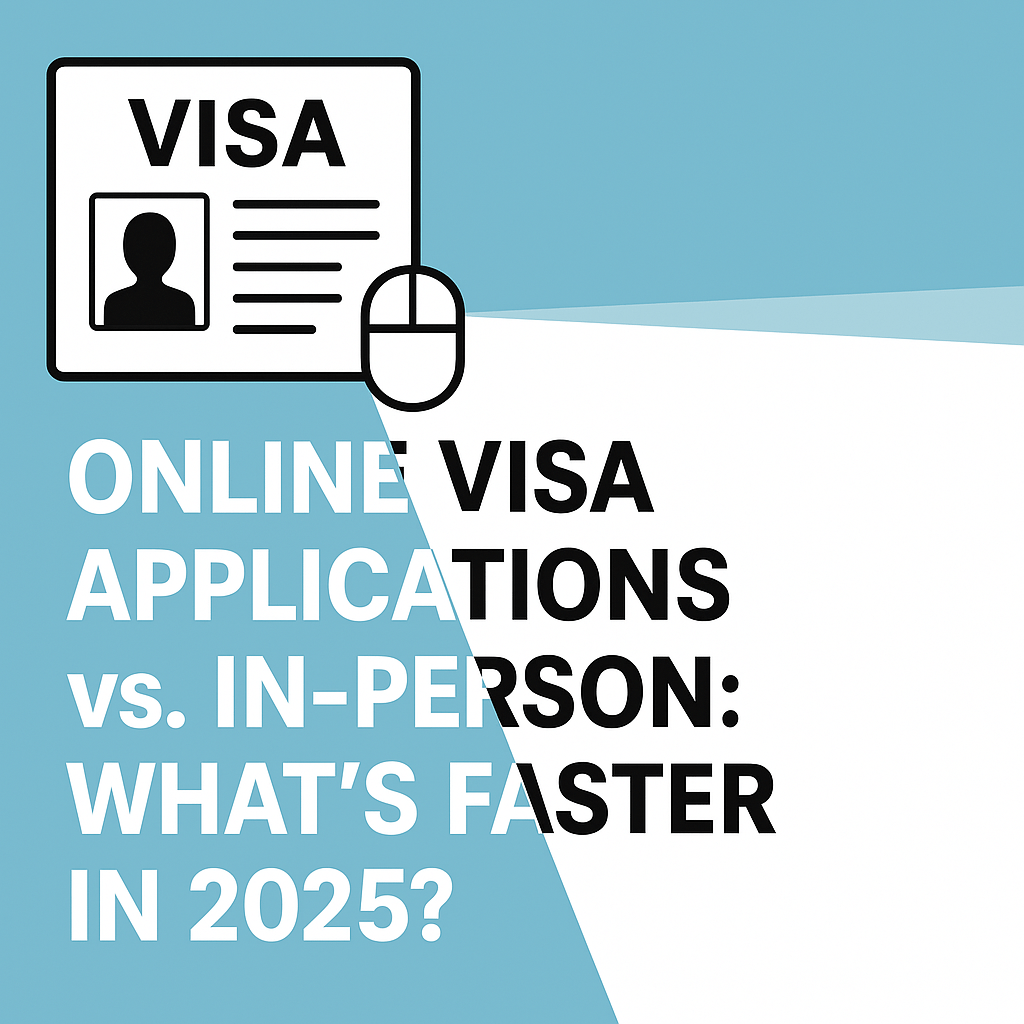
As the world becomes increasingly digital, visa application processes have followed suit. In 2025, many countries will offer both online and in-person visa application options. But which one is faster, more efficient, and ultimately better for today’s travelers?
The Rise of Online Visa Applications
Over the past few years, online visa applications—also referred to as electronic visas or e-visas—have become increasingly common. To cut down on paperwork and expedite entrance procedures, governments and immigration agencies have made significant investments in digital infrastructure.
Online applications’ advantages include:
Speed: With turnaround times varying from a few hours to a few days, applications are usually handled more quickly.
Convenience: Candidates can pay from home, submit papers, and fill out forms.
Transparency: Real-time application status tracking is now available on several platforms.
Several Schengen Zone nations, Australia, India, and the United Arab Emirates are well-known locations with effective online visa processes.
In-Person Visa Applications: Still Relevant?
Many visa types still require in-person applications despite the shift to digital, particularly those involving:
Extended stays (e.g., residency, employment, or study visas)
Collection of biometric data
In-depth interviews or records
The difficulties with in-person applications
longer processing delays as a result of paperwork and manual verification.
Travel to embassies or consulates is necessary.
limited appointment times, which might occasionally cause delays.
However, for some high-risk or high-complexity visas, in-person applications are still thought to be more complete and secure.
Comparing the Two: What’s Faster in 2025?
In 2025, internet visa applications are typically substantially quicker. E-visas can frequently be acquired in less than 72 hours for short-term travel visas (tourist, business, and transit). In certain nations, approvals are even granted in a day.
When the Internet Is Faster:
Low-risk or short-term travel
programs that waive visas or nations that have been pre-approved
Countries having immigration processes that are entirely computerized
When in-person interaction is required:
Long-term or complicated visa categories
Nations with stringent security measures
Candidates that need to submit biometric information or have interviews
Online visa applications are typically quicker, easier to use, and more accessible in 2025. International travel has never been easier thanks to the digital revolution, even though in-person applications are still necessary in some situations. If you match the requirements, most tourists can save time and hassle by choosing an e-visa.
Understanding the advantages of each approach can make navigating the visa application process easier, whether you’re planning a quick weekend trip or an international journey.
